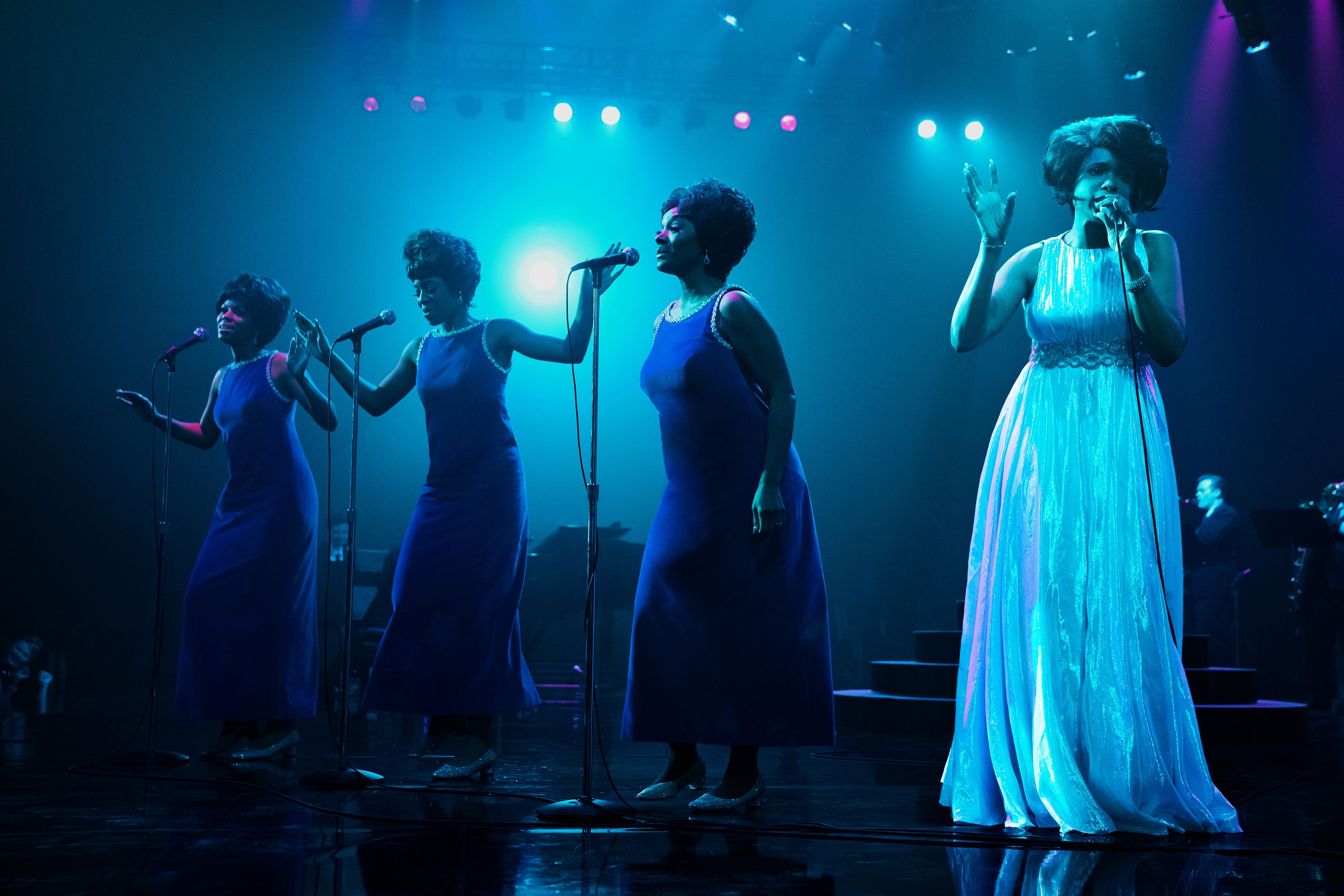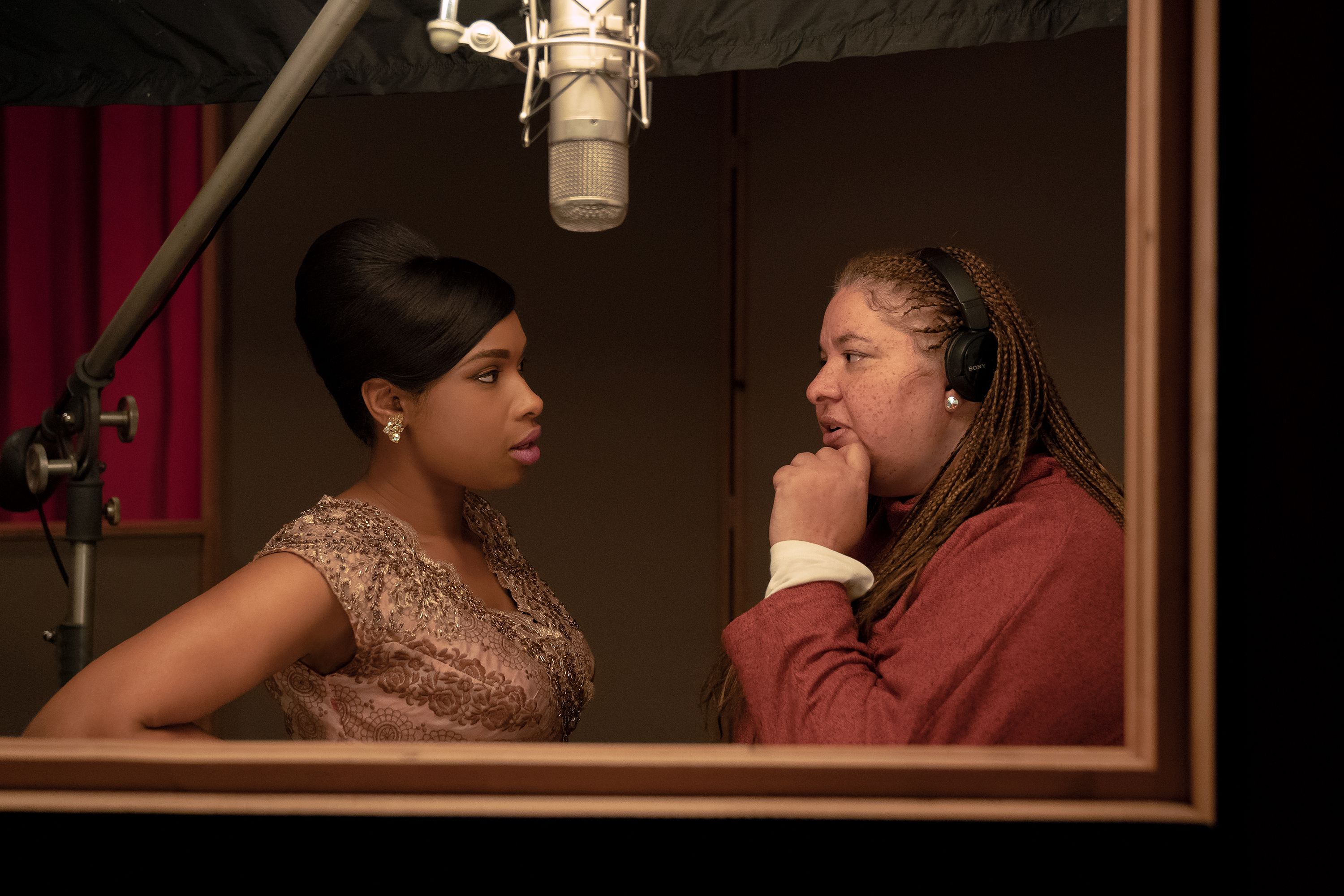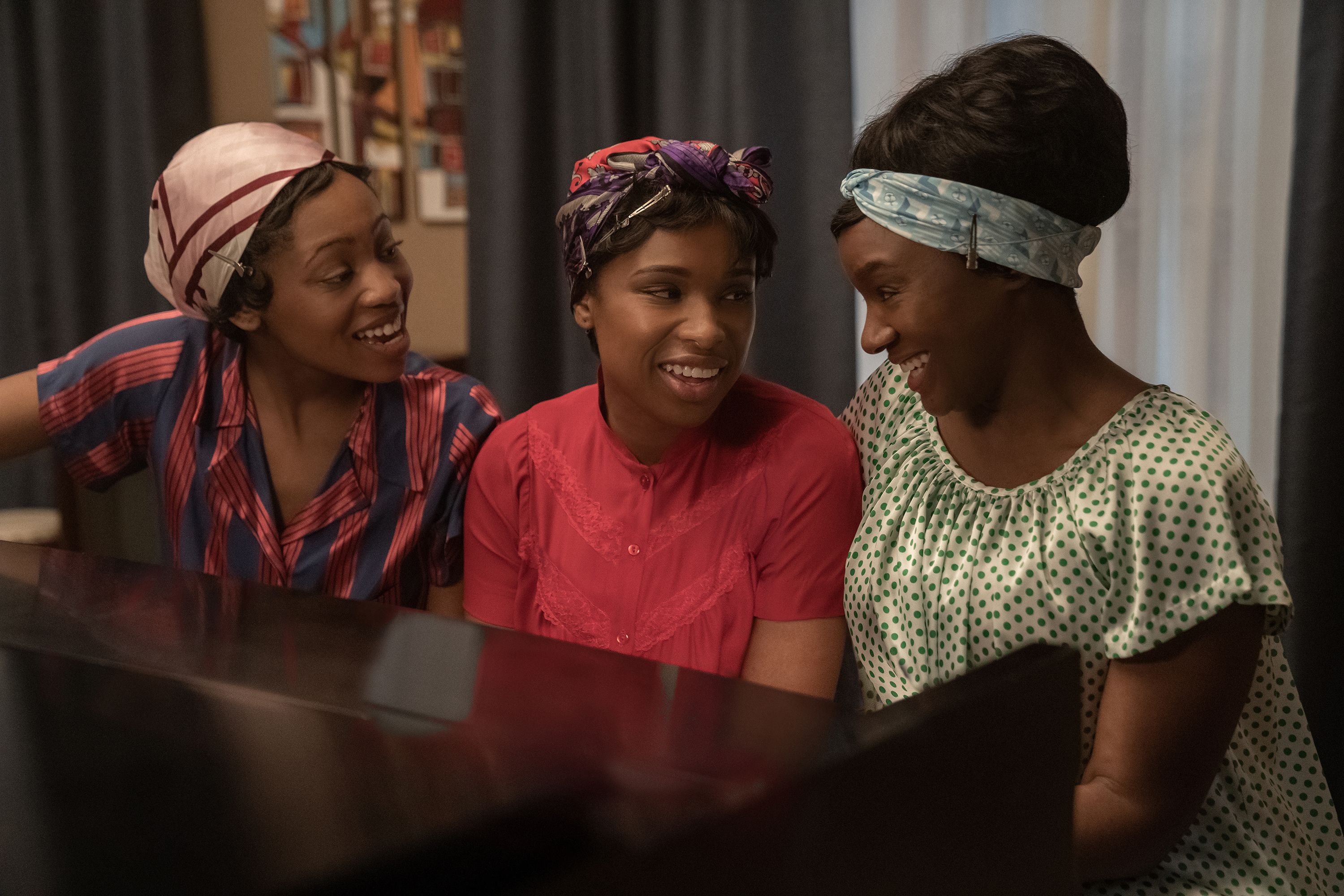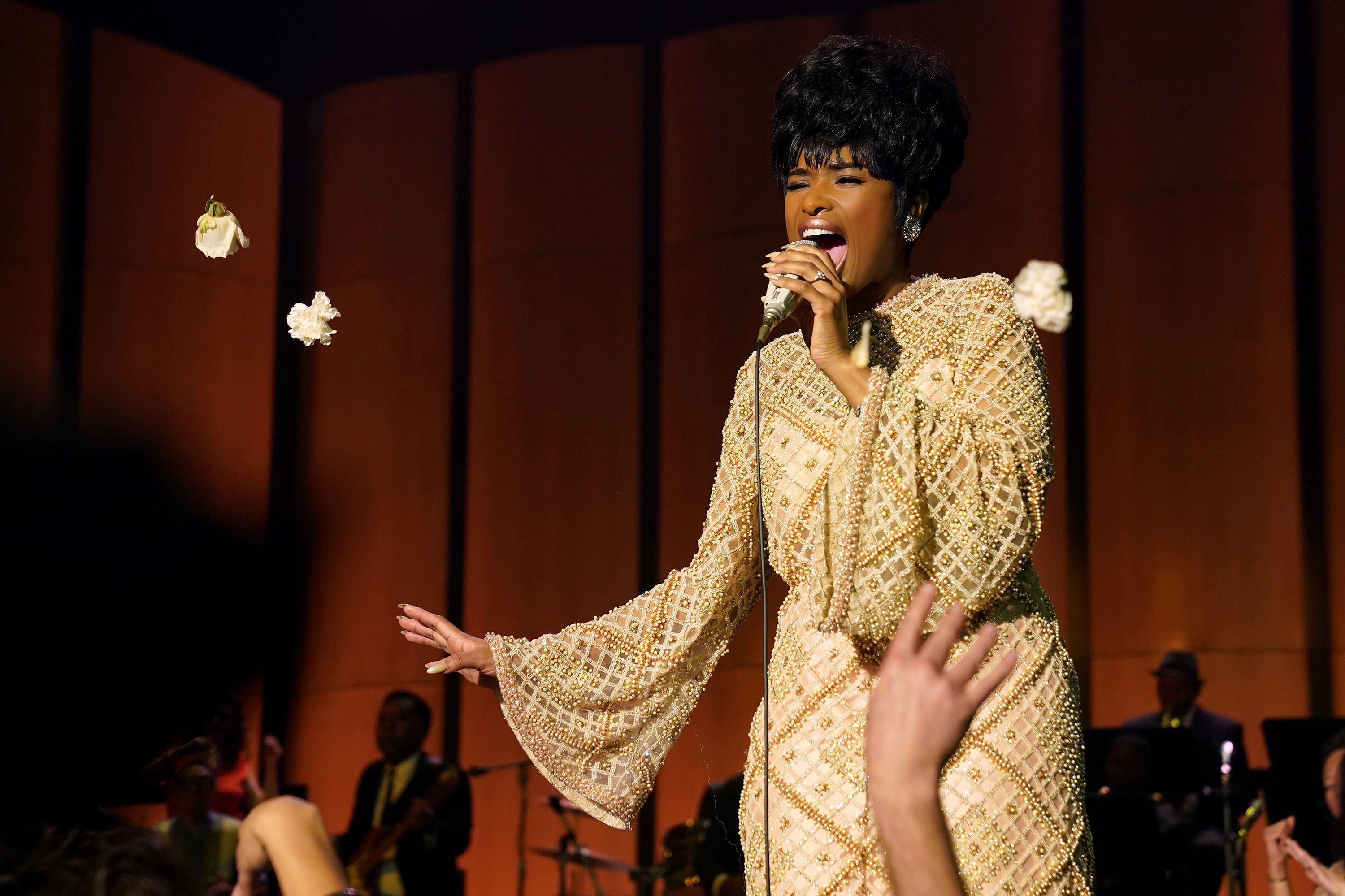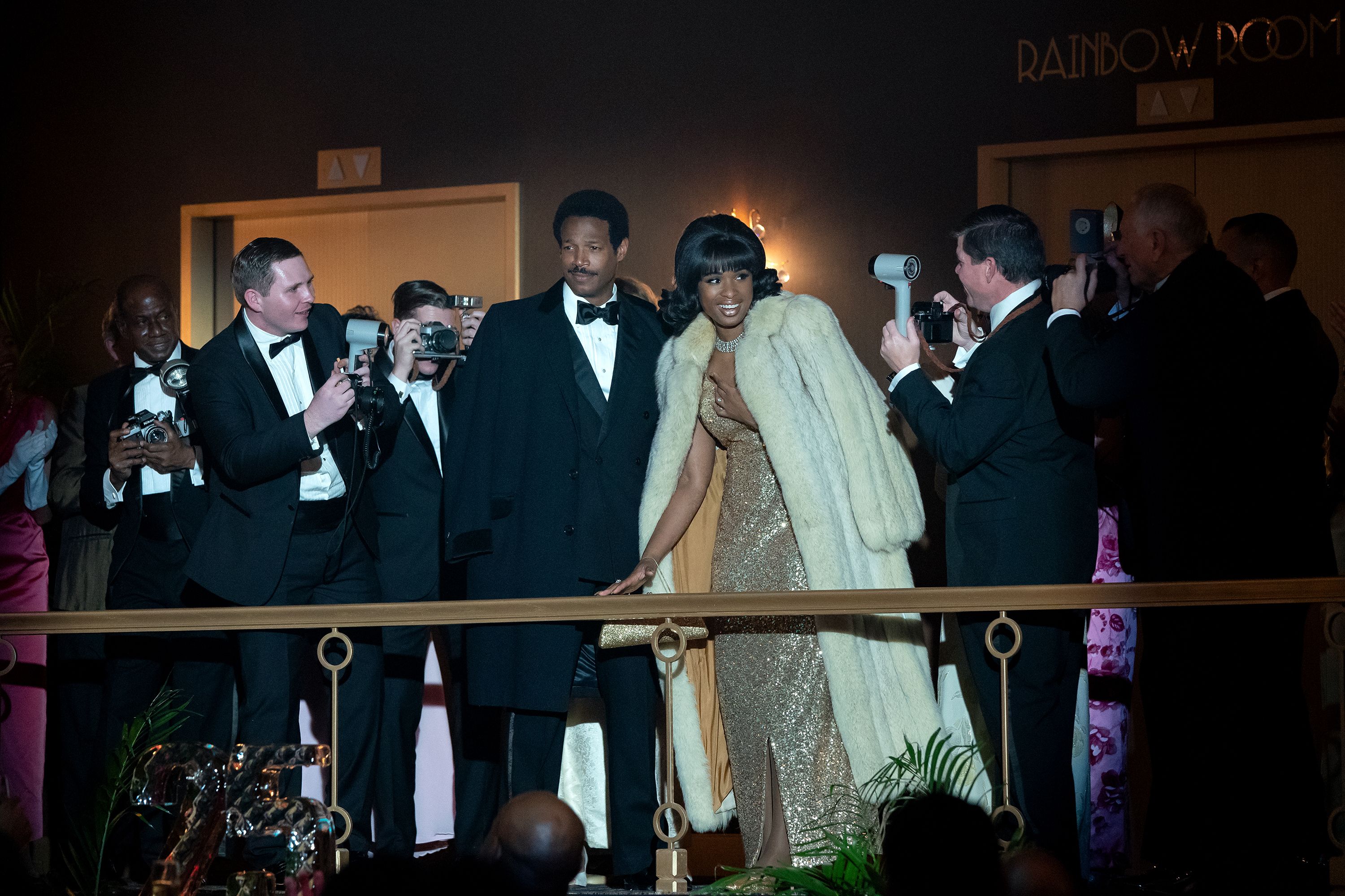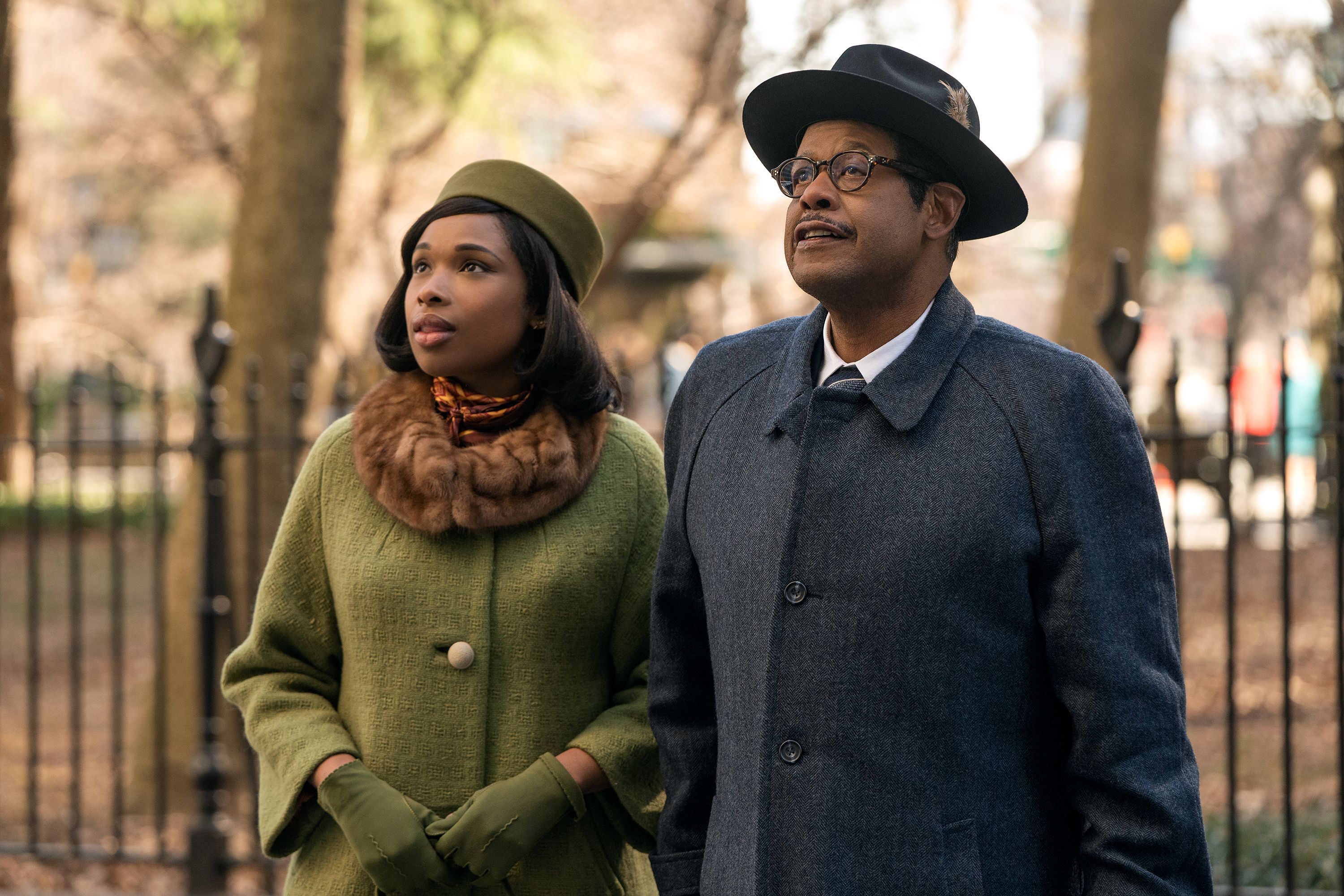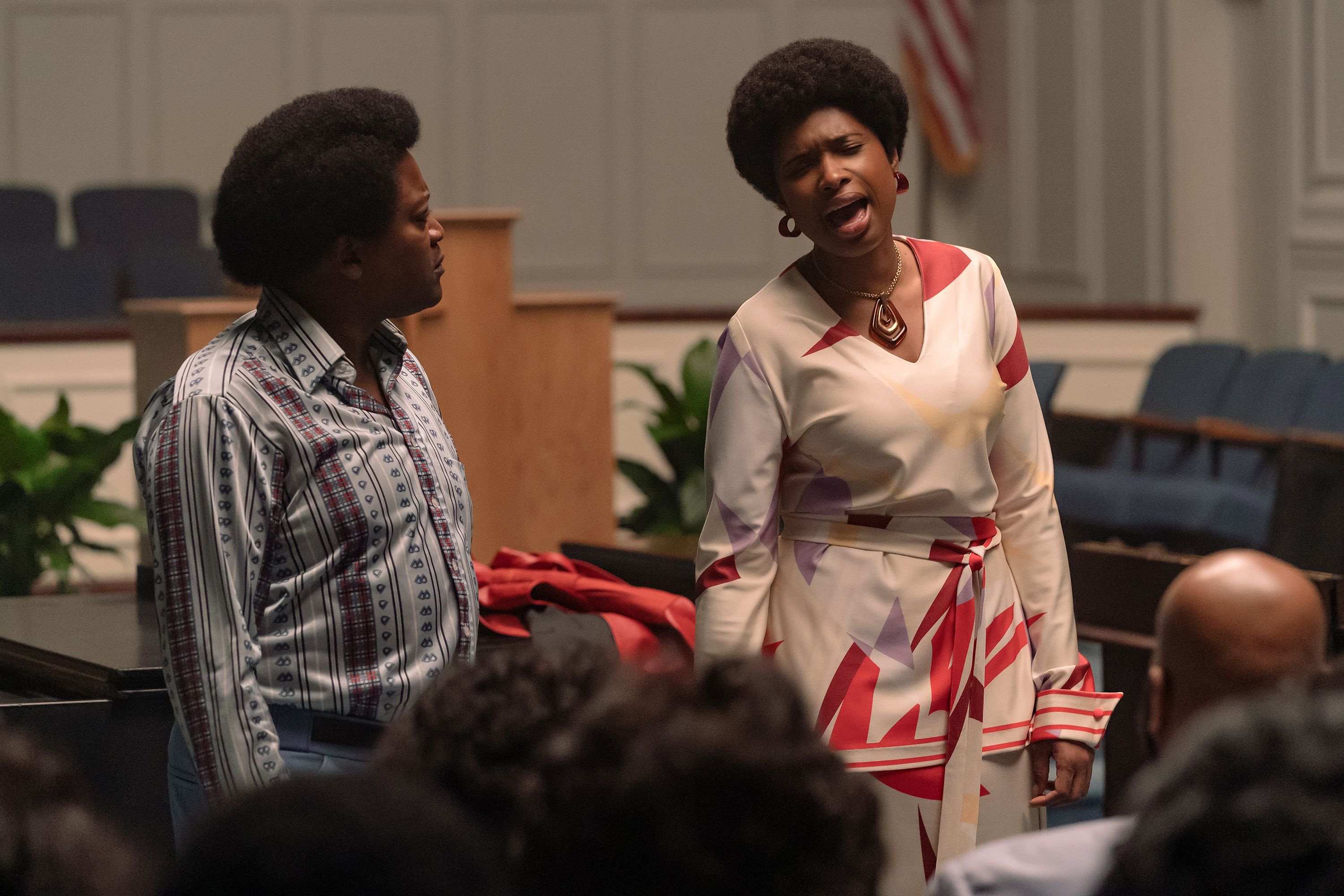Just like her iconic songs, Aretha Franklin’s clothing was emotional.
“In a way, clothing for her was a way to express her emotions, not necessarily a personality or a sense of style,” costume designer Clint Ramos, who worked on the newest Franklin biopic, Respect, tells BAZAAR.com. While the drama, starring Jennifer Hudson, traces the music legend’s journey of finding her voice over the course of her transcendent career, it also highlights Franklin’s underrated status as a fashion icon. Beyond Franklin’s signature glittering gowns and luscious furs, the film makes it a point to showcase her church attire, which reflects her spiritual upbringing, and her ’70s caftans and Afro, which, like her voice, allowed her to unapologetically take up space.
Ramos, who boasts a Broadway background (Slave Play, Once on This Island, Eclipsed) and a Tony Award, was tapped for Respect by its director, Liesl Tommy, one of his longtime friends and collaborators. (They’re working on a Whitney Houston biopic together next.) “When she asked me, I kind of did have an idea of what I was trying to do, which was really just honor her [Aretha], but also give a vision of Aretha that people have not seen,” he says. “Because we knew Jennifer was anointed by Aretha, it was kind of helpful to start imagining Aretha through Jennifer’s body.”
He started diving in before a script was even ready. And that meant doing thorough research. “I literally read every book that was written on Aretha.” He also read up on her father, C. L. Franklin, a preacher, civil rights leader, and mentor to Martin Luther King Jr.; singer Clara Ward; and other notable figures in her community. Franklin’s political background was enlightening to Ramos. “Yes, there is glamour, there are gowns, but there’s also a lot of moments where she’s really grounded in what she believes in,” he says of her life story.
Ramos, who was born in the Philippines and is now usually based in Harlem, New York, has been a vocal supporter for Black and Indigenous theater workers, as well as theater workers of color, given the industry is famously white—even behind the scenes. While working on Respect, which is directed, written, and led by Black women, he brought a similar reverence and responsibility to the work. He aimed to make the clothing look exuberant and “aspirational,” he says.
“In the beginning [at a party at the Franklins’ house], you see them really well dressed,” he adds. “Ella Fitzgerald is in there; all of these family and friends who are like rock stars in Black music are there. You’re literally looking at royalty. So that’s sort of what I want to invoke. And then, when we went to the churches, I wanted it to be alive.”
Here, Ramos walks us through his process of honoring Aretha Franklin through clothes.
Jennifer Hudson was very involved in choosing the costumes.
Oscar-winning Hudson, who was handpicked by Franklin to portray her before she died, was hands-on in dressing her character. “I would say she was like a dream to work with, because she trusted me in terms of choices and collaboration,” Ramos recalls.
The first time he and Tommy met with Hudson for the film, he presented the actress with research and concept sketches. He wanted to show her that for Franklin, “clothing was an emotional response.” He explains, “When you see a lot of photographs of Aretha wearing clothing, she’s in control of the clothing. The clothing is not wearing her. And by being in control, her humanity shows through it. So there are photographs, a lot of photographs, where you see a strap has fallen off her shoulder, a jacket is worn and there’s a relaxed feel about it. There’s always something kind of interesting and, I would say, off. There’s a delicious way of, like, you can see her character. But I wanted Jennifer to see it. I wanted her to understand that I think a lot of what I was trying to do was convey the humanity behind the clothing.”
That meant dressing Franklin not only in glamorous gowns, but also for the moments of struggle. Through multiple meetings they imagined “the stuff that she would have worn, had she been photographed through those dark moments in her life, like the slip that she wears when she’s really at a low point in her life, or what she would have worn when she got into that car accident, all of that,” Ramos explains. “And I think a trust had been built there, because Jennifer saw that, yes, we were going to do the pretty stuff—it was easy—but we also were going to take it seriously and really look at it unblinkingly and help her do the actor’s work.”
And Hudson was not afraid to do the work. During her screen test, Ramos recalls, before she officially landed the role of Aretha, she had already rehearsed the singer’s walk and mannerisms. “To me, that signaled she’s down for the work—this is not about vanity. This is an actor seriously taking on this role. And so, that was really fun and refreshing. I knew from then on that we could collaborate on a very sort of deep level,” he says.
Hudson was very open to Ramos’s suggestions. She also understood her body. (She’s much taller than Franklin was in real life.) Together, they brainstormed and adjusted looks based on what the character was going through in a certain scene. “For instance, that first recording session at Columbia [Records], she was very young, she’s wearing this pink dress in that recording booth,” Ramos says. “She and I talked about, ‘She’s very uncomfortable here. They’re packaging her to be sort of like a Black Judy Garland.’ And so, [Hudson] said, ‘Maybe it’s a beautiful dress, but maybe it’s not fitting her right.’ So we made it really, really tight. She was held up, there was a tension in her torso.”
Originally, more than 80 looks were made for Hudson.
Ramos started out with 82 costume changes for Aretha, consisting of a mix of vintage, made-to-order couture and handmade pieces. Fittings alone took around 10 weeks. In the end, Hudson had about 55 looks, Ramos says.
About 15 of the pieces were vintage, including Aretha’s casual looks, such as a pair of pedal pushers and the slip she wears during a heartbreaking low point. Then all her gowns were handmade. Standing at almost six feet tall, Hudson was not an average vintage size, which explains why a bulk of her costumes were custom.
They supported Black costume designers and businesses.
Given Franklin’s status as a towering figure in Black culture and history, it was important to dress her in clothing made for and by Black people. “All of the costumers that we use, most of our crew were African Americans, my costume supervisor was African American, and a lot of the vintage patterns and a lot of protective clothing that we did, we made sure that we supported African-American businesses,” Ramos says. “The clothes that we used for the principals, a lot of them were homemade, and a lot of them were made by African-American artisans.”
But finding those pieces wasn’t always easily accessible. “For instance, the church dresses—just starting at the research level, not everything is online. So we had to go to these Black churches and go through their archives to look at photographs,” he says. “And then, when we went vintage shopping, we went through African-American neighborhoods in Atlanta [and] New Jersey. A lot of African Americans at that point were making their own clothing. So you then source a lot of this vintage clothing through literally the community itself.
“And so, we supported a lot of those businesses. But that was a big spine in our process, because the only way to honor a people was to get it right. And authenticity was really important to us.”
In the scenes with big crowds, such as the concert and church scenes, assistant costume designers were integral to dressing all the actors. “A lot of the outfits, although I gave them directions, were really made by Black assistant costume designers,” Ramos says.
The biggest challenge was a hand-beaded dress that took three months to make.
In the film, when Franklin performs in Amsterdam during the height of her career, she wears a beautiful, beaded beige gown with bell sleeves and an intricate diamond pattern. (It’s also what Hudson wears in the movie poster.) While there were many costuming challenges on the set of Respect, Ramos says that this piece presented the greatest one. Handcrafted with pearls and crystals on strips of ribbon, the dress took about three months to make. Ramos tapped the costume house Eric Winterling Inc. in New York, which built most of Hudson’s costumes. The final product weighed around 40 pounds, Ramos estimates. And when stored, the dress wasn’t hung but had to be laid flat. It “has to be in its own little bed,” he says. Hudson wore the piece over a soft pink slip for more coverage, as the dress itself was more netlike.
The flowing caftan Hudson wears at the end of the film, for Franklin’s recording of “Amazing Grace” in the ’70s, was also a tough one “because we needed to get the scale of the paisleys right,” Ramos says. She also wore a number of intricate looks for her concert scenes, including a shimmery Egyptian-style dress and Nefertiti crown, which were also made by hand.
“What I love about that scene is that she’s in this really exquisitely hand-beaded gown and she’s behaving really badly,” Ramos says, noting that the scene shows Franklin drunk and falling off the stage during one of her low points. “I love this sort of tension between somebody looking really, really beautiful, and then is like a mess, you know?”
Aside from the Amsterdam gown, one of Ramos’s favorite looks is from one of Franklin’s most desperate moments in the film, when she seeks help in the midst of an alcohol addiction. (The real-life singer had denied such allegations.) She’s at home, stripped down, wearing a slipdress and no wig. “We really see the humanity behind the genius, and we see the vulnerability, and we actually see how much work it takes to become Aretha Franklin. And I love that the audience gets to see that. Plus, also, I love the work that Jennifer did in that costume,” Ramos says.
Aretha wore her famous coats as armor.
In the latter half of the film, Franklin begins to wear more of the coats and furs we knew her to frequent later in life. While the luxurious outerwear pieces were elegant additions to her outfits, they also served a practical and emotional purpose: “The furs were an armor for her,” Ramos explains.
“She came up in an era where women didn’t take up a lot of space. So as she got more and more successful, it was a way for her to kind of, like, signal success, but also shield herself. It was all about safety, and understandably, it all comes from trauma, but Aretha, famously, would bring the fur and the purse onto the stage, because she didn’t trust anybody.
“So there were many moments, if you read the biographies, when she would do a concert or something, she would insist the promoter pay her in cash and that money would be in the purse. And then, that purse would be brought onstage and would be parked either on the piano or all within her eyesight.”
The first fur Hudson wears in the film is a silver fox number at a birthday party and culminates with a chinchilla piece she wears for the “Amazing Grace” rehearsal.
The clothing reflected Aretha Franklin’s evolution in finding her power.
Respect, which spans decades of Franklin’s life, shows the icon taking control of her voice and confidence in her work, and also in the civil rights movement. There was “a big discussion” about mirroring that journey in her clothing, Ramos says.
Early in the movie, Franklin wears “girly” silhouettes. “She had floral skirts. She was dressed in that sort of 1950s very prim and proper preacher’s daughter kind of thing,” Ramos says. She also grew up with taste, considering her parents’ status. “I think a lot of folks don’t understand that Aretha came from a really affluent family. Her father was a rock star preacher, had his own giant megachurch in Detroit, and literally was, like, a bastion of social justice. So they had money. And I think a lot of folks, because of inherent bias, think every sort of Black diva comes from rags to riches. … There’s been an instilled kind of taste level, particularly because the mother was an opera singer.”
As Franklin grows up in the film, her aesthetic noticeably changes when she brings her man, Ted White (Marlon Wayans), who would go on to be her first husband, home for dinner for the first time.
“In that scene, she wears the neckline very low. She’s wearing red, a solid color, and her sisters are wearing florals—it looks like they’ve just come from church except for her. And so, it catapults her to another level of like, ‘Yes, I found my voice. I’m insisting on this man who I love. And I’ve also found my body, my sense of body here.’”
Later in the ’70s, Franklin wears freer, billowier pieces, not just to reflect the breezy trends at the time, but also to reflect her political stance. The change happens after she stands up to her father and decides to pay for Angela Davis’s bail.
“I wanted to mark that as a big sort of moment,” Ramos explains. “This is where she decides, ‘I’m going to fly my political flag, and this is what’s going to happen.’ And so, the moment she starts wearing the Afro, everything becomes about space. Everything becomes about the caftan, taking up space.”
Source: Read Full Article

